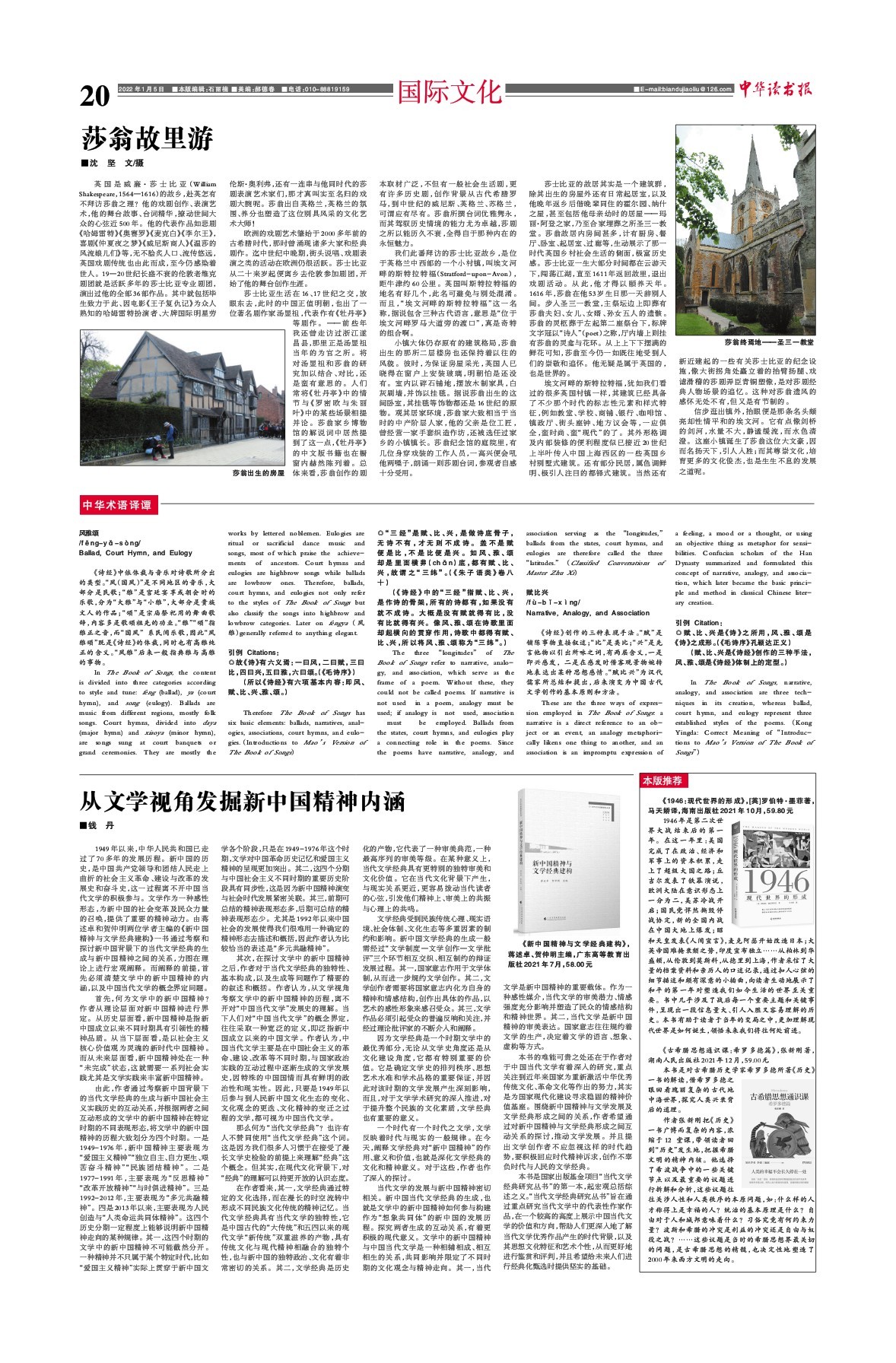风雅颂/fēng-yǎ-sòng/Ballad, Court Hymn, and Eulogy
《诗经》中依体裁与音乐对诗歌所分出的类型。“风(国风)”是不同地区的音乐,大部分是民歌;“雅”是宫廷宴享或朝会时的乐歌,分为“大雅”与“小雅”,大部分是贵族文人的作品;“颂”是宗庙祭祀用的舞曲歌辞,内容多是歌颂祖先的功业。“雅”“颂”指雅正之音,而“国风”系民间乐歌,因此“风雅颂”既是《诗经》的体裁,同时也有高雅纯正的含义。“风雅”后来一般指典雅与高雅的事物。
InThe BookofSongs,the content is divided into three categories according to style and tune: feng (ballad), ya (court hymn), and song (eulogy). Ballads are music from different regions, mostly folk songs. Court hymns, divided into daya(major hymn) and xiaoya (minor hymn),are songs sung at court banquets or grand ceremonies. They are mostly the
works by lettered noblemen. Eulogies are ritual or sacrificial dance music and songs, most of which praise the achieve-ments of ancestors. Court hymns and eulogies are highbrow songs while ballads are lowbrow ones. Therefore, ballads,court hymns, and eulogies not only refer to the styles of The BookofSongs but also classify the songs into highbrow and lowbrow categories. Later on fengya(风雅)generally referred to anything elegant.
引例 Citations:◎故《诗》有六义焉:一曰风,二曰赋,三曰比,四曰兴,五曰雅,六曰颂。(《毛诗序》)
(所以《诗经》有六项基本内容:即风、赋、比、兴、雅、颂。)
Therefore The Book ofSongs has six basic elements: ballads, narratives, anal-ogies, associations, court hymns, and eulo-gies.(Introductions to Mao’s Version of TheBookofSongs)
◎“三经”是赋、比、兴,是做诗底骨子,无诗不有,才无则不成诗。盖不是赋便是比,不是比便是兴。如风、雅、颂却是里面横丳(chǎn)底,都有赋、比、兴,故谓之“三纬”。(《朱子语类》卷八十)
(《诗经》中的“三经”指赋、比、兴,是作诗的骨架,所有的诗都有,如果没有就不成诗。大概是没有赋就得有比,没有比就得有兴。像风、雅、颂在诗歌里面却起横向的贯穿作用,诗歌中都得有赋、比、兴,所以将风、雅、颂称为“三纬”。)
The three“longitudes”of The BookofSongs refer to narrative, analo-gy, and association, which serve as the frame of a poem. Without these, they could not be called poems. If narrative is not used in a poem, analogy must be used; if analogy is not used, associationmust be employed. Ballads from the states, court hymns, and eulogies play a connecting role in the poems. Since the poems have narrative, analogy, and
association serving as the“longitudes,”
balladsfrom the states, court hymns, and
eulogies are therefore called the three
“latitudes.”(Classified Conversations of
MasterZhuXi)
赋比兴/fù-bǐ-xìng/Narrative,Analogy,andAssociation
《诗经》创作的三种表现手法。“赋”是铺陈事物直接叙述;“比”是类比;“兴”是先言他物以引出所咏之词,有两层含义,一是即兴感发,二是在感发时借客观景物婉转地表达出某种思想感情。“赋比兴”为汉代儒家所总结和提出,后来演变为中国古代文学创作的基本原则和方法。
Theseare the three ways of expres-sion employed in The BookofSongs:a narrative is a direct reference to an ob-ject or an event, an analogy metaphori-cally likens one thing to another, and an association is an impromptu expression ofa feeling, a mood or a thought, or using an objective thing as metaphor for sensi-bilities. Confucian scholars of the Han Dynasty summarized and formulated this concept of narrative, analogy, and associa-tion, which later became the basic princi-ple and method in classical Chinese liter-ary creation.
引例 Citation:◎赋、比、兴是《诗》之所用,风、雅、颂是《诗》之成形。(《毛诗序》孔颖达正义)
(赋、比、兴是《诗经》创作的三种手法,风、雅、颂是《诗经》体制上的定型。)
In The Book of Songs,narrative,analogy, and association are three tech-niques in its creation, whereas ballad,court hymn, and eulogy represent three established styles of the poems. (Kong Yingda: Correct Meaning of“Introduc-tions to Mao’s Version ofThe Bookof Songs”)



 上一版
上一版

 缩小
缩小 全文复制
全文复制 上一篇
上一篇